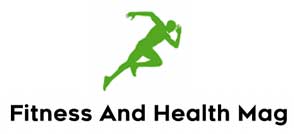Obesity is a disease that is part of the framework of “Chronic Non-Communicable Diseases”, defined as excessive accumulation of fat in a way that leads to problems for the health of the individual. A little less severe than this situation, we are overweight, a condition in which individuals have fewer health problems. Still, the overweight individual can quickly progress to obesity—being harmful to the individual in terms of health and aesthetic issues.
The concentration of the macronutrients carbohydrates, proteins and fats in the diet can directly interfere with the energy utilization pathways, generating weight gain or reduction. We can say that a diet with a caloric surplus of the individual’s expenditure can cause weight gain. In contrast, a diet with insufficient calories generates a reduction in energy reserves and consequent weight loss. The balance between what we eat and expend is more efficient at producing an energy deficit than physical exercise alone.
The caloric need of an individual is generated by aspects such as life routine, training routine, and metabolism characteristics, among others. Physical activity is the most variable component of total energy expenditure and concerns the energy expenditure required for skeletal muscle activity. In sedentary individuals, it represents approximately 15% of total energy expenditure, while in physically active individuals, it can reach 30%. Physical exercise provides an increase in daily caloric expenditure, regulation of the sensation of hunger and satiety, an increase in resting metabolic rate, an increase in lean mass, an increase in the thermic effect of food, an increase in oxygen consumption, the optimization of indexes of fat mobilization and utilization, as well as a sense of self-sufficiency and well-being.
The caloric expenditure triggered by physical activity can be classified as acute or chronic. Sensitive spending refers only to the energy needed during exercise and muscle recovery, whereas the standard form is linked to muscle adaptations, which influence the resting metabolic rate. As a rule, we can say that aerobic exercises are more efficient in producing caloric expenditure at the time of activity (acute effect). In contrast, strength exercises are more efficient in generating muscle adaptations (chronic development). However, there are many discussions about the most suitable activity to optimize weight loss. The ACSM recommendation of 1983 and 1998 informs that aerobic exercises in 60% of the maximum heart rate are the most efficient in reducing weight.
When it comes to the type and intensity of physical exercise ideal for weight loss, it is necessary to analyze the characteristics of the individual; it is pretty difficult to believe that an untrained individual is capable of maintaining a high-intensity exercise for some time. Necessary to produce a prolonged elevation in post-exercise energy expenditure and an increase in free fatty acid oxidation. Regardless of the author’s point of view or the results of each research, it was observed that an essential aspect of weight loss is the total amount of energy spent during the 24 hours of the day and not just what substrate is being used during the day—the exercise.
We believe that strength exercises are today the most suitable for weight reduction. This is because these exercises or those aerobic ones performed above 70% of VO2 max promote metabolic adaptations during training, interfere with homeostasis during the recovery phase, and increase post-exercise caloric expenditure through activation of the sympathetic nervous system, causing more significant metabolism: post-exercise lipid, appetite reduction. Strength exercises end up being more suitable for weight reduction phases, as they are more efficient in increasing muscle mass.
What To Avoid In The Diet To Dry Fat?
Eating better will help with your fast-drying diet. We’ve selected foods you should avoid during a fast-drying diet. Check out what they are:
- sugar;
- instant noodles;
- cereal bar;
- soda;
- industrialized juices;
- foods produced with white flour;
- stuffed cookies;
- ice creams;
- Pizza;
- processed meats;
- alcoholic beverages;
- Coffee with sugar.
Remember that these foods need not be excluded entirely from your diet. However, they are not usually recommended to lose belly or lose fat in a diet. Talk to your nutritionist, understand the best menu according to your needs and structure a diet suitable for your goals.
ALSO READ: FITNESS EXERCISES FOR AT HOME IN TIMES OF THE CORONA CRISIS
